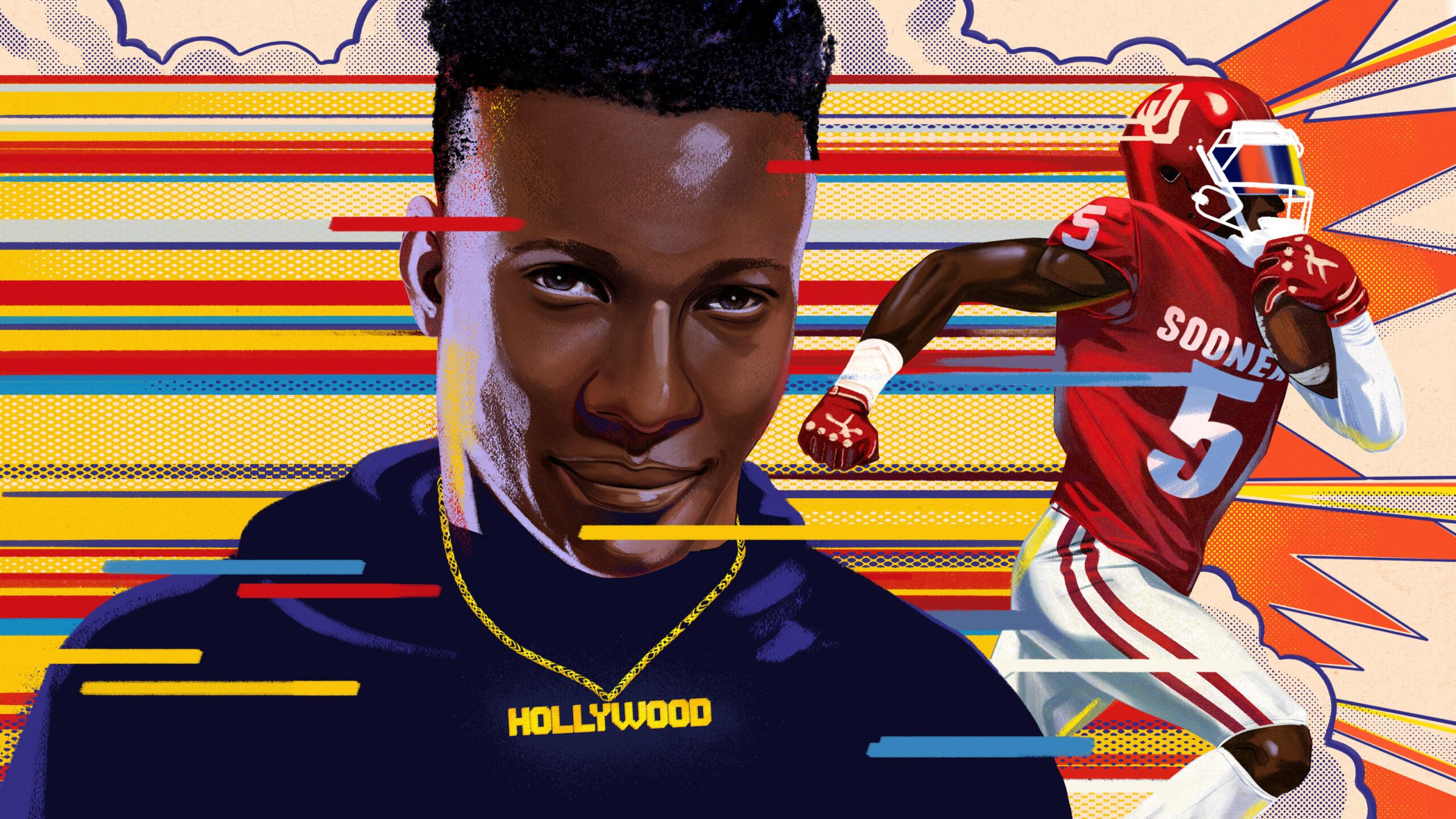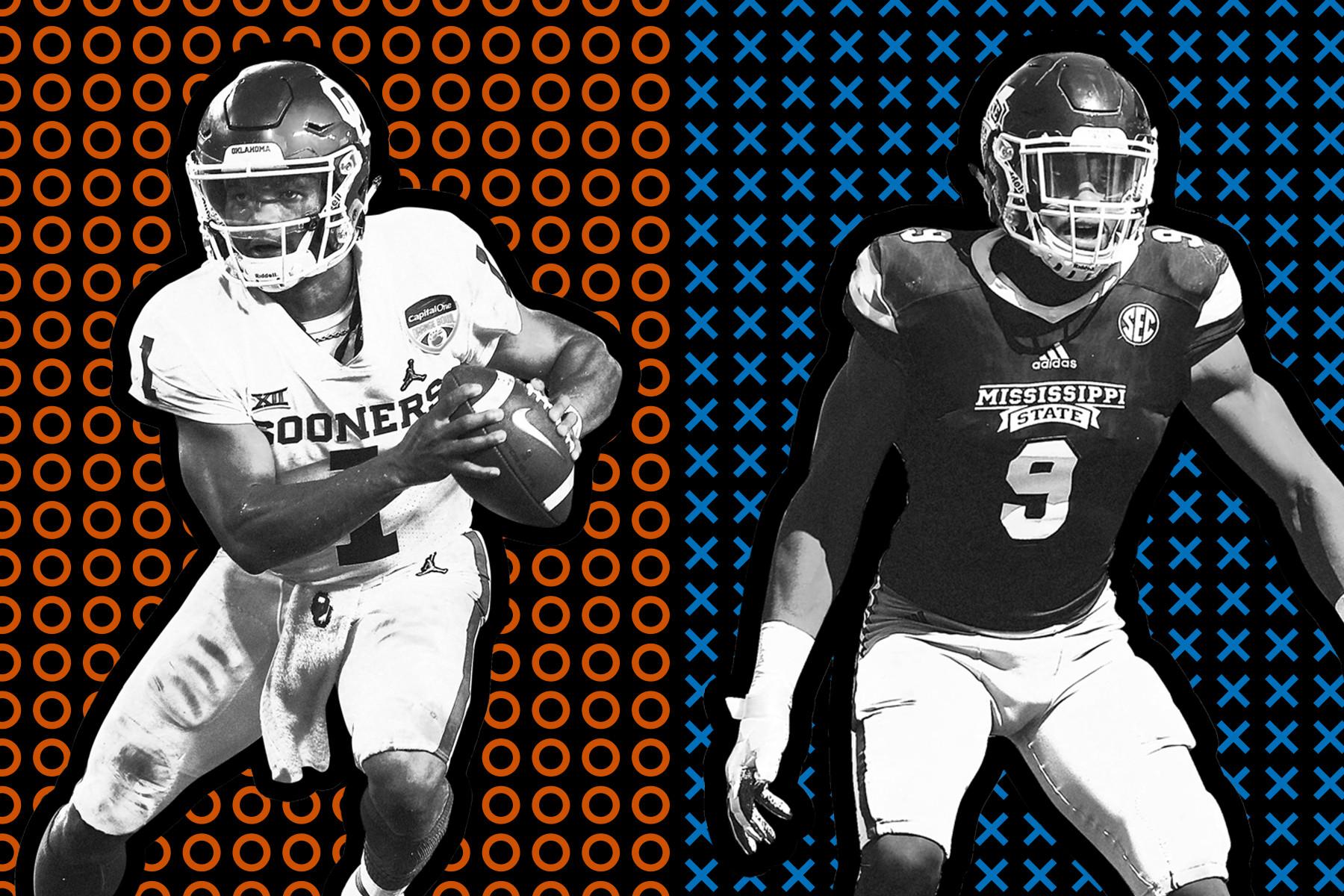Hollywood Brown Is Racing Into the Heart of the NFL’s Offensive Revolution
Can the most polarizing receiver prospect in the 2019 draft outrun concerns about his size to become a star in the pros? To hear the Oklahoma product tell it, he was uniquely groomed for this moment.Every aspect of Marquise Brown’s apartment feels temporary. The only pieces of furniture in his Norman, Oklahoma, living room are a Walmart-bought coffee table and a couch, with a large blue Rubbermaid container serving as a makeshift TV stand. An empty duffel bag and other clutter are piled next to the tan cloth sofa, and a box that once housed the 50-inch Insignia flat screen leans against an eggshell-white wall. After two illustrious seasons at the University of Oklahoma, the now-21-year-old wide receiver will soon be on his way out of town, off to join whichever franchise takes him in this week’s NFL draft. The setup is fitting for a college student nearing move-out day, with one important caveat—Brown’s mother, Shannon, purchased the furniture for the common area three weeks ago. “We never really came out of our rooms,” Brown says of the months prior.
The common space’s sole purpose is seemingly to host games of Madden, and on this cloudless Good Friday Brown is facing off against his cousin, Bernard Scott. Once buried in a 21-7 hole, Brown’s Kansas City Chiefs mount a comeback. Down by a touchdown, Brown directs Patrick Mahomes to unleash a deep toss down the seam for speedy receiver Tyreek Hill, who corrals a contested heave for a 50-plus-yard gain. “That looked like Hollywood right there,” Brown says of the catch. Depending on his opponent, Brown likes to vary his Madden squad, but when the stakes get real the Chiefs are his choice. That’s no accident. Last fall brought one of the highest-scoring seasons in NFL history, with Kansas City and its MVP quarterback emerging as the league’s most exhilarating team. And as the Chiefs redefined offense at the professional level, Brown’s Sooners embodied innovation among the collegiate ranks. In head coach Lincoln Riley’s two seasons at the helm in Norman, Oklahoma has led the nation in total offense twice and produced two Heisman Trophy–winning quarterbacks.
During his short but magical college career, Brown was the top target for both Baker Mayfield and Kyler Murray. He thrived at the creative epicenter of the sport while garnering headlines for his skill set and lineage, as he’s the cousin of superstar Raiders receiver Antonio Brown. Marquise has now become one of the most intriguing prospects in the 2019 draft class—a playmaker with unmatched speed and a notably undersized frame (5-foot-9 and 166 pounds). The Ringer’s draft expert, Danny Kelly, wrote that Brown is “a breakaway threat from anywhere on the field,” and terms like “home run” and “terrifying” seem to populate every examination of his game.
As NFL offenses increasingly borrow concepts from Riley’s Sooners and similar college schemes, Brown could become a case study in how teams conceptualize the future of the receiver position. On Thursday, he could also cap an improbable journey by becoming the first wideout to hear his name called. “He’s going to be a fit in so many different places, and as offenses in the league continue to evolve, there are going to be more and more places for him,” Riley says. “He is, no doubt, what that league is looking for. The game is different when he’s on the field.”
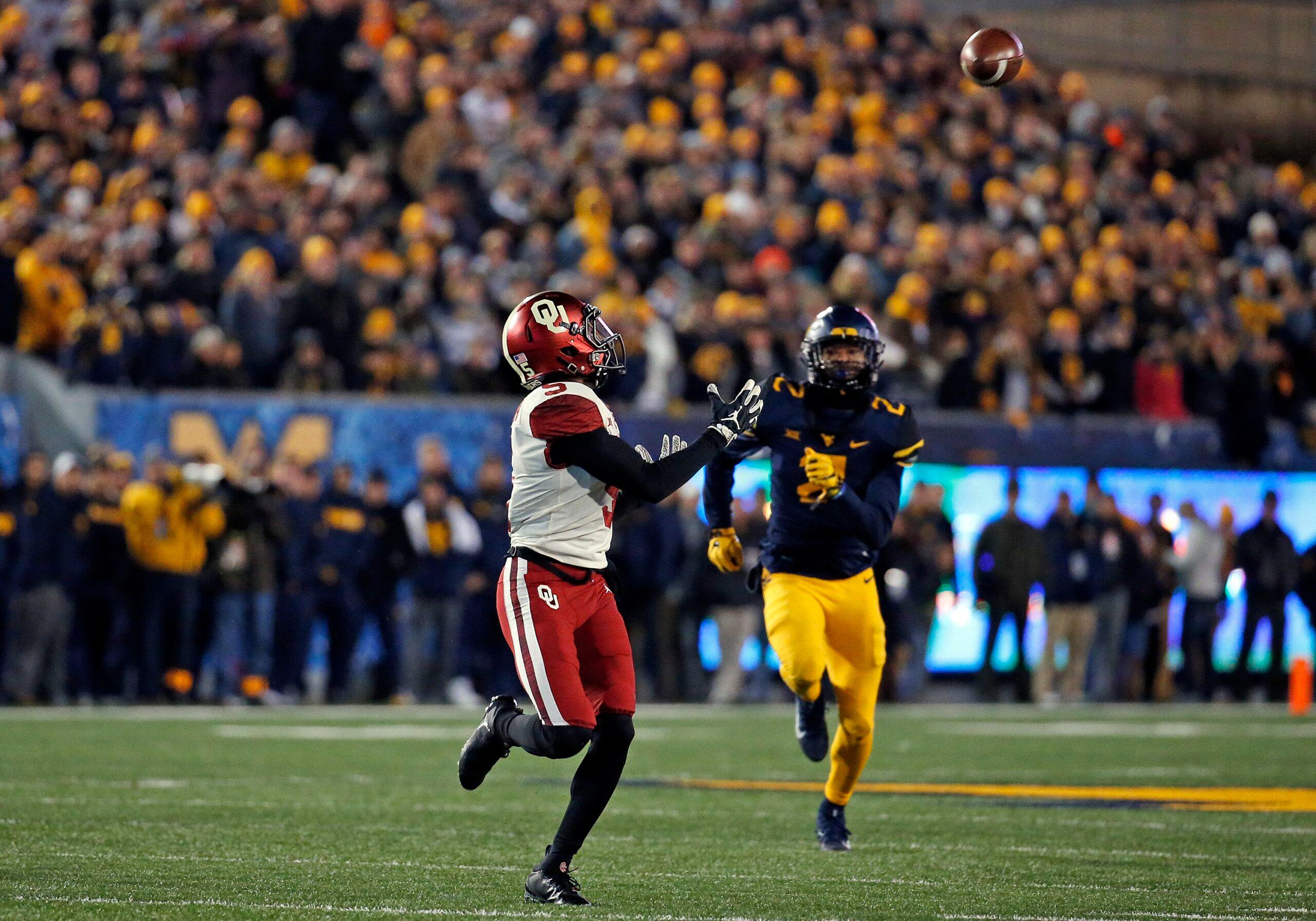
Throughout the predraft process, Brown has met plenty of new faces, from fellow prospects to NFL coaches to personnel executives across the league. To a man, nearly all of them have called him “Hollywood.” Nicknames with that type of cachet usually take hold in childhood, following a player to every stop along his career. But Brown’s handle dates back to the start of his Oklahoma stint in 2017. “People think that I had it for so long because I came out of nowhere,” Brown says. “But I came out of nowhere, and they’re calling me this already.”
Brown attracted meager Division I attention as a recruit growing up in Hollywood, Florida. As a senior at Chaminade-Madonna College Preparatory in 2014, he measured 5-foot-9 and 130 pounds. He initially failed to meet the NCAA’s Division I academic requirements because of complications with his ACT score, limiting interest from major college programs. So he went the juco route instead. College of the Canyons head coach Ted Iacenda stumbled upon Brown’s tape after hearing about him from a fellow recruit, and he remembers his reaction upon watching it for the first time: This kid can fly, but man, he’s tiny. “I did not, for a second, think I had a first-round draft pick,” Iacenda says.
He has a gear that maybe five or six human beings in the world have right now. There’s fast, and there’s world-class fast. And that is Marquise Brown.Ted Iacenda, College of the Canyons head coach
As soon as Brown flew out to Santa Clarita, California, and got on the practice field, though, Iacenda realized that he’d underestimated him. On a play early during their first session together, the College of the Canyons quarterback floated a downfield pass to Brown even though the defensive back in coverage was in perfect position. Brown chewed up the 10 yards of cushion the cornerback had afforded him and easily secured the catch. “I looked at my receivers coach like, ‘Did that just happen?’” Iacenda says. “And that’s the second you knew: We have something special here. He has a gear that maybe five or six human beings in the world have right now. There’s fast, and there’s world-class fast. And that is Marquise Brown.”
Brown finished his lone season at College of the Canyons with 50 catches for 754 yards and 10 touchdowns, totals that attracted interest from USC, Oklahoma, and West Virginia. But what truly sold the Sooners staff on Brown were other facets of his life in California. Brown slept on a popped air mattress in a room that he found on Facebook for $400 a month. He worked as a merry-go-round operator at Six Flags Magic Mountain amusement park. Without a car, he’d often make the half-hour walk to the job up an incline in sweltering summer heat; when his shift ended, he’d navigate dark streets without sidewalks or lights as coyotes howled off in the distance. “You don’t do those things if you don’t think you’re capable of making it,” Riley says. “He’s always had that belief in himself. Anything we needed to know about the kid’s character, that story pretty much answered it.”
Upon Brown’s arrival in Norman, he quickly answered any questions about his on-field potential as well, but Riley was hesitant to throw him into the fray. Brown wasn’t refined at first, relying exclusively on speed and hesitation moves. The coaching staff’s trust in him grew through the first half of 2017, and he finally got his big break in late October. With the Sooners trailing 21-10 at halftime against Kansas State, Mayfield approached Brown in the locker room. The QB said he’d told Riley it was time to unleash their speed demon, and Brown went on to record six catches for 126 yards in a 42-35 Oklahoma win.
He’s always had that belief in himself. Anything we needed to know about the kid’s character, that story pretty much answered it.Lincoln Riley, Oklahoma head coach
That fall, the Sooners derived most of their energy from Mayfield’s outsize charisma. He fueled the intensity in practice. His demeanor before games injected a mostly inexperienced locker room with a jolt of confidence. Brown saw how much every detail of the game mattered to his quarterback, and in turn, how much they should matter to him. Late in that season, when Mayfield lofted a deep pass to Brown during the second half of a close win over TCU, Brown left his feet and went horizontal to the ground to make the catch. “I’ve never dove a day in my life,” Brown says. “I dove for that pass against TCU pass all because of Baker. He probably doesn’t know that. Some people can just pull it out of you.”
Brown’s respect for Mayfield made the QB’s halftime endorsement all the more powerful. And after his dominance against the Wildcats, the scrawny receiver took flight. Two games later, in just his second career start, he exploded for 265 yards and two touchdowns in an aptly named Bedlam win over Oklahoma State. The second of those scores came in the fourth quarter, with the Sooners ahead 48-45. As Brown broke free in the secondary and Mayfield found him deep down the right side, announcer Gus Johnson howled, “Hollywoooooood” as the kid from Hollywood, Florida, tore down the field for a 77-yard touchdown.
And with that, Hollywood Brown—college football highlight machine—was born.
A few days after the Sooners’ Rose Bowl loss to Georgia in January 2018, Brown received a text message that would forever change his trajectory: I’m at the field, come by. It was an invitation from Antonio Brown, the then-Steelers receiver and Marquise’s cousin on his father’s side. Growing up, Marquise didn’t have much of a relationship with anyone on that half of his family tree. Late in high school and during his days at College of the Canyons, he’d get the occasional text from his All-Pro cousin, but that was the extent of it. When Marquise’s career at Oklahoma began to take off, Antonio started asking him to train at his home in Hollywood. Marquise never thought of the gesture as anything more than a basic courtesy. “He would always tell me, ‘Come work out with me,’ and it was like, ‘All right … yeah,’” Brown says. “People say stuff. I’m like, ‘He’s not tryin’ to work out with me.’ I’ve been disappointed all my life. I’m a see-it-to-believe-it sort of person.”
After capping a season as the leading receiver on the most prolific offense in college football, though, Brown worked up the courage to measure his skills against the game’s best. Not long after getting that text, Brown headed to the old Pop Warner field in their neighborhood where Antonio held his workouts. The two cousins connected immediately. “We hit it off, out the gate,” Marquise says. “I was competing hard with him. He said that no one had ever slid into his workout like that. [So afterward] he’s like, ‘Come to the house.’”
That afternoon marked Hollywood’s first trip to Antonio’s palatial 12-bedroom estate. But while the accommodations were luxurious, their training regimen was grueling. Their days would begin around dawn, with a pilates session or a light lift. Breakfast followed, and from there they’d head to the field to work on releases and route techniques. After on-field workouts, they’d take a quick shower and break for lunch. Afternoon film sessions came next, followed by a conditioning workout and a massage before dinner. “And that’s when stuff got interesting,” Marquise says. Each night would end differently: with a run on the beach, an intense film session, or a pickup basketball game. “His whole day is football related,” Marquise says of Antonio. “He’s the most consistent person I ever saw. Every day. He’ll lighten the day up, but every day is something. It was shocking.”
Antonio taught Marquise to think several steps ahead. During a one-on-one drill during Steelers training camp last summer, Marquise listened intently as Antonio detailed how his next rep against a corner would function as a counter off his previous move. “He knows exactly what he’s gonna do,” Marquise says. “His toolbox is pretty ridiculous.” From training together and observing, Marquise also learned that there’s rarely a benefit to running routes at full speed. The key is to lure defenders into slowing down before revving back up. “You don’t need to [be fast all the time],” Brown says. “Once I’m on you, that’s when I’m going to turn it up. But until then, I’m gonna cruise and make every route look the same.”
Brown says that he and his cousin never discussed the growing tensions between Antonio and the Steelers organization, or the circumstances that led to the March 10 trade that sent him to Oakland. Their focus was always on how to ensure that nobody else was training as hard, or in the same way, as they were. “You hear stories, guys get in the NFL, and they don’t work,” Marquise says. “And he’d tell me that. But if you want to be the best, this is it.”
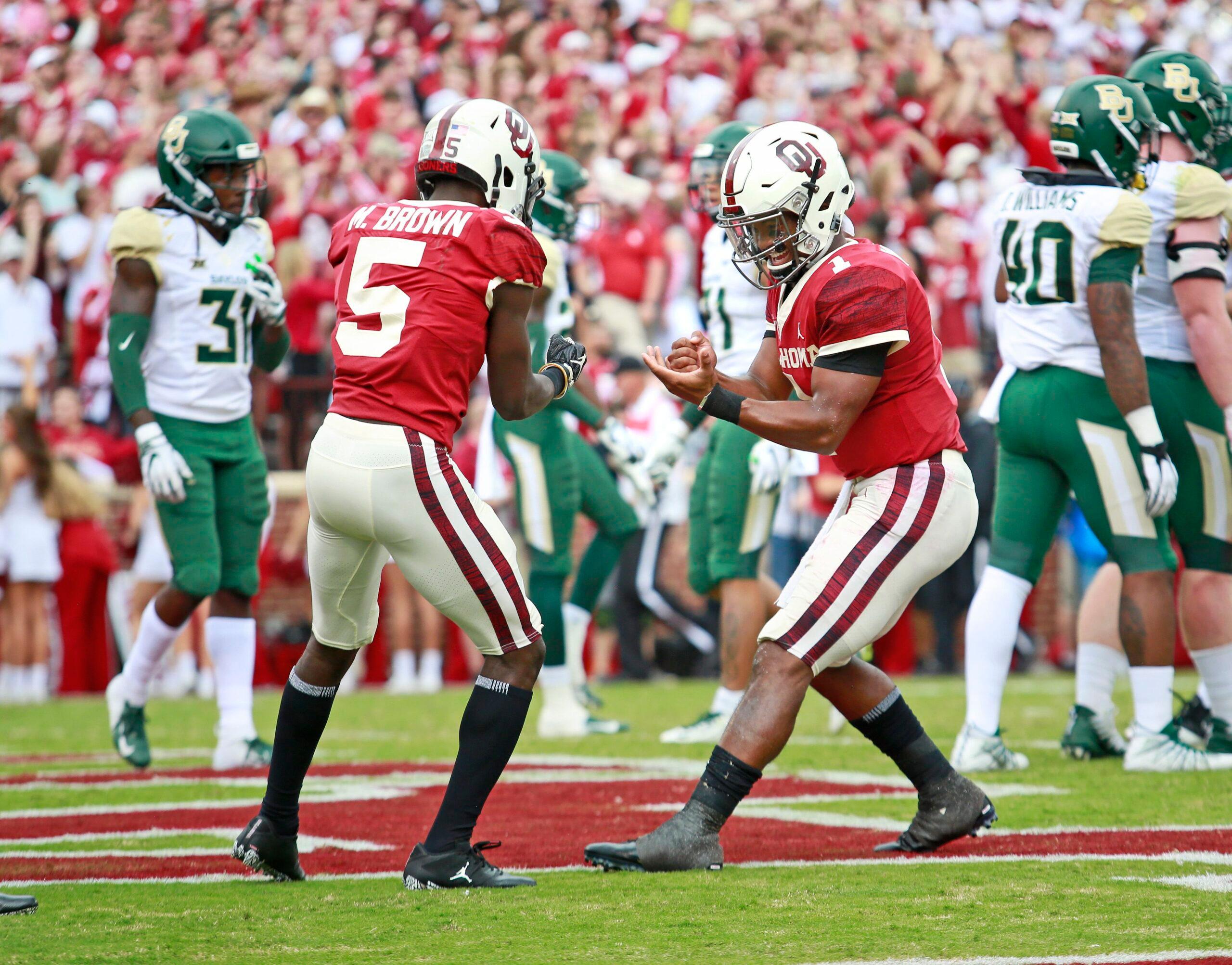
Each time Brown returned to campus after spending a few days with his cousin, he was eager to show off what he’d learned. As the Sooners prepared for the start of the 2018 season, the Oklahoma staff noticed that Brown had blossomed into a wholly different receiver than the one they’d recruited the year before. Hollywood was no longer a bundle of raw talent who could excel in a supporting role; he was ready for any task Riley threw his way. “He’s always wanted to play fast, and he’s always wanted to practice fast,” Riley says. “He’s just got to learn, ‘I’ve got a great weapon, I work hard at it. Now I’ve got to learn when and how to use it.’”
Along with gaining an understanding of how and when to set up certain releases, Brown accelerated his evolution by broadening his knowledge of defenses. Rather than focusing solely on his assignment, he started to grasp how everything works in concert, such as how a safety should alter his path on a given route. As Brown delved into the minutiae of the game, he found a willing study partner in Kyler Murray. The pair had been close since Murray hosted Brown on his 2017 visit to Norman, but found more common ground in their desire to find answers on the field. Murray is reserved by nature, a far cry from the brash, boastful Mayfield. But when the QB glimpsed how a play could work against that week’s defense, his face would light up. Brown has long been similar. “We’re sitting here, just talking about life, I’m not talking,” Brown says. “Football stuff, that gets me excited.”
If I’m building a team, I’d want me a Marquise Brown. I’d want me a Kyler Murray. With those two things, you could make anything else work.Marquise Brown
Before Murray’s first start, Brown wasn’t sure what to expect out of the 2018 season. Without Mayfield’s unceasing enthusiasm, Sooners practices took on a different energy. In the minutes leading up to Oklahoma’s season opener against Florida Atlantic, Brown says Mayfield’s verve was noticeably absent, replaced by Murray’s quiet intensity. “Honestly, before then, I knew he was good but I didn’t know he was gonna be like Baker,” Brown says. By the end of the first quarter, the Sooners had scored four touchdowns. “We got in the game, and the energy was there,” Brown says. “It was like, ‘Oh, we’re gonna be all right.’”
Under Mayfield, Oklahoma’s receiving corps was comprised mostly of young players who hadn’t experienced the rigors of major college football. They drew their confidence from the quarterback. Last season, the confidence was collective. Part of Brown’s expanded role was taking more snaps in the slot, and his favorite sight was a single safety over the top when he lined up inside. “I get so happy when I go out there, hop in the slot, and see that one dude back there,” Brown says. He and Murray would exchange a glance, and that’s all it would take. Brown finished the season with 75 catches for 1,318 yards and 10 touchdowns, fueling an offense that scored 48.4 points per game. “He’s one of those guys you’ve got to account for on every down,” Riley says. “And we’ve done a good job schematically where you put defenses in a bind and create some really good matchups.”
Even after going down with a right Lisfranc injury during the Big 12 title game against Texas and serving as a decoy in Oklahoma’s subsequent College Football Playoff loss to Alabama, Brown says he didn’t give much thought to returning to the Sooners in 2019. With little left to prove in college and Murray turning pro, Brown found the idea of starting over with a third quarterback in three years too much to bear. So he and Murray shifted their focus to Thursday’s first round, and to savoring the last stretch of their pre-professional lives.
A few days ago, Murray and Brown engaged in a spirited Madden session. For their first game, Murray played with the Arizona Cardinals, owners of the no. 1 pick and the franchise that has long been speculated as his likely landing spot. But after losing to Brown and the Titans, the Heisman winner turned to a heavy hitter. “Things got serious,” Brown says, “so he went to the Rams.” It still wasn’t enough to best Brown and his video-game favorite Chiefs.
Despite some teams having reservations about their size, Brown is certain that he and Murray are the right kinds of players to be the foundations of any NFL team. Whether in his real-life career or in his virtual matchups against Murray, Brown feels at home on the sport’s cutting edge. “After watching the Chiefs, playing at Oklahoma, if I’m building a team, I’d want me a Marquise Brown,” Brown says. “I’d want me a Kyler Murray. For sure. With those two things, you could make anything else work.”
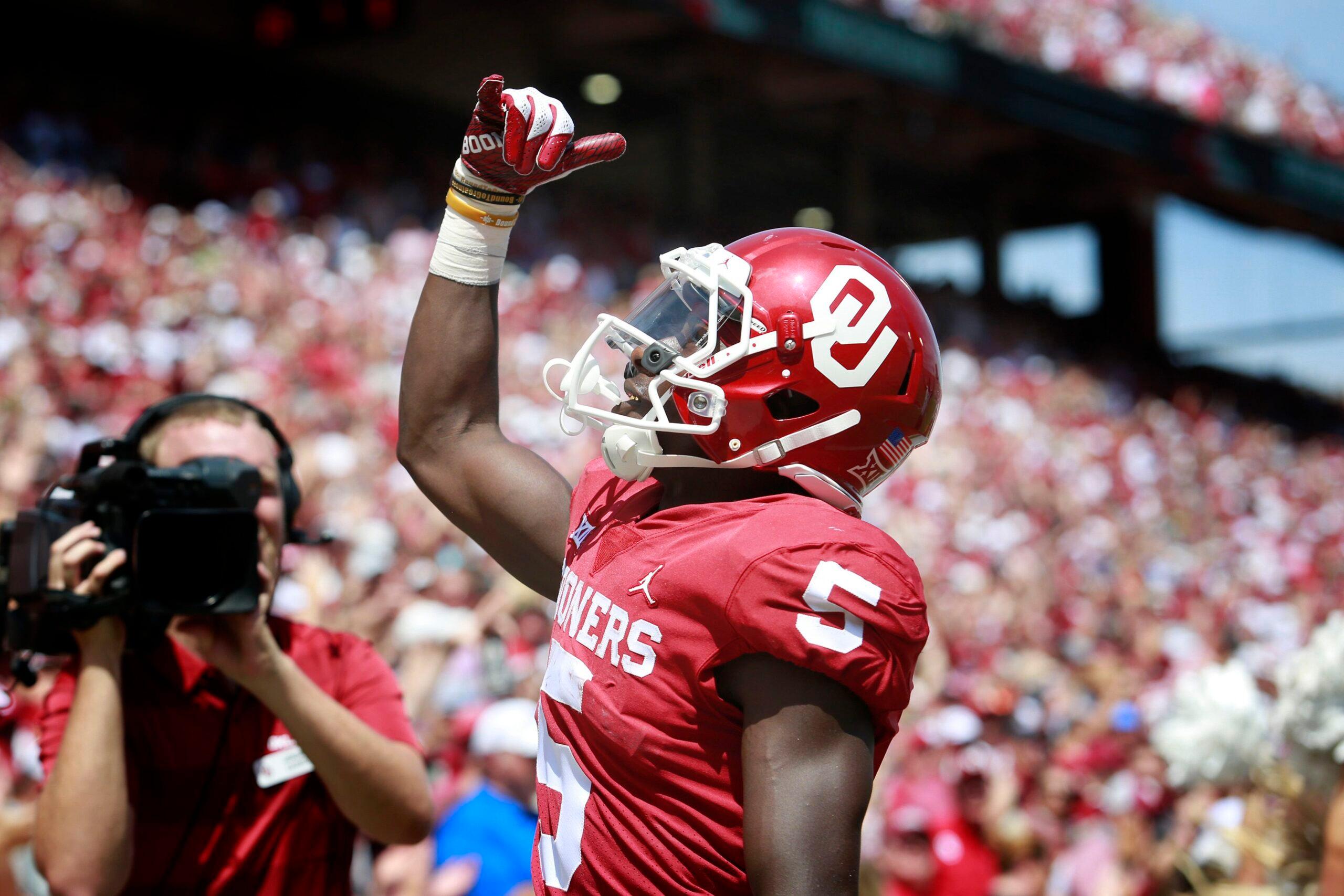
Brown spends the Saturday morning before Easter completing video interviews with a handful of teams. With the draft fast approaching, front offices are doing their final due diligence. They’re curious about the status of Brown’s right foot, and they wonder about the risks the diminutive receiver could pose. Brown measured 5-foot-9 and 166 pounds at February’s NFL combine; since 2000, no receiver 5-foot-9 or shorter who weighs less than 170 pounds has finished with more than 688 yards in a season.
They try to say, ‘There hasn’t been a receiver this weight since da da da.’ Yo, stop that.Marquise Brown
By now, Brown has seen all of the historical data that suggests he’s destined to struggle in the pros. He’s tired of it. “They try to say, ‘There hasn’t been a receiver this weight since da da da,’” Brown says. “Yo, stop that. They bring up this guy that was this size that went to the league, but none of them played how I played the game. They probably have exciting film. Tavon Austin had the most exciting film I ever saw. But as a receiver, it wasn’t like my film. I give you the releases. I give you the routes. I give you the big-play ability. I give you [that] and I give you the receiver aspect.”
That last part is what Brown says sets him apart. More than his size or speed, he wants to be defined as a voracious student of the position. One of his interviews last Saturday was with the Eagles, which came as a thrill for a kid who grew up a fan despite living in Florida. To Brown, football didn’t get more exciting than Michael Vick going deep to DeSean Jackson. Brown sees Jackson as the best comparison for him as a prospect, but far from the only one. Every week that Brown was at Oklahoma he asked the staff to pull together game tapes on three receivers. He analyzed how DeAndre Hopkins uses his hands and controls his body position along the sideline; how Stefon Diggs drops his hips on routes to create sharper angles; even how Peter Warrick created yards after the catch at Florida State in the late 1990s. “All those guys played a role in who I am,” Brown says. “You’d come into my room, since I was a kid, and I was studying.”
The prototypical modern receiver can make big opponents play small, and fast opponents play slow. That’s what the league is looking for, and it’s the reason Brown feels that he should be the first wideout taken this week. He has unique insight into the intricacies of the modern game—and more crucially, a plan to stay on the forefront of it. He may lack size, but he makes up for his stature with a knack for knowing how to attack defenders with a blend of speed and explosiveness that would be rare in any era. “The best thing you can do is when you’re looking somebody in the eyes, you freeze, and they freeze,” Brown says. “You won. I’m gonna run at you, I’m looking right at you, if you stand still, by the time I get 3 or 4 yards [away], I’m waving the hand.”
